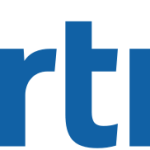- Industry: Consulting
- Number of terms: 1807
- Number of blossaries: 2
- Company Profile:
Gartner delivers technology research to global technology business leaders to make informed decisions on key initiatives.
A method of using technology to collect, process and condense information with a goal of efficient management. Most large enterprises have a central IM function to facilitate this coordination. The primary technologies needed are contained in a set of modeling tools that either have or interface to a production-worthy repository where the information is stored and managed. The repository and tools must be capable of receiving information in a “top-down,” “bottom-up” or “middle-out” evolutionary manner.
Industry:Technology
Information life cycle management (ILM) is an approach to data and storage management that recognizes that the value of information changes over time and that it must be managed accordingly. ILM seeks to classify data according to its business value and establish policies to migrate and store data on the appropriate storage tier and, ultimately, remove it altogether. ILM has evolved to include upfront initiatives like master data management and compliance.
Industry:Technology
Gartner defines information governance as the specification of decision rights and an accountability framework to ensure appropriate behavior in the valuation, creation, storage, use, archiving and deletion of information. It includes the processes, roles and policies, standards and metrics that ensure the effective and efficient use of information in enabling an organization to achieve its goals.
Industry:Technology
A methodology for developing an integrated information system based on the sharing of common data, with emphasis on decision support needs as well as transaction-processing (TP) requirements. It assumes logical data representations are relatively stable, as opposed to the frequently changing processes that use the data. Therefore, the logical data model, which reflects an organization’s rules and policies, should be the basis for systems development.
Industry:Technology
Information dispersal algorithms provide a methodology for storing information in pieces (dispersed) across multiple locations, so that redundancy protects the information in the event of a location outage, but unauthorized access at any single location does not provide usable information. Only the originator or a user with a list of the latest pointers with the original dispersal algorithm can properly assemble the complete information. This has been expanded to include peer-to-peer (P2P) file-sharing technologies and protocols, such as those based on the BitTorrent Protocol, which has proved to be robust on the Internet.
Industry:Technology
Reporting — Reporting provides the ability to create formatted and interactive reports, with highly scalable distribution and scheduling capabilities. In addition, BI platform vendors should handle a wide array of reporting styles (for example, financial, operational and performance dashboards).
Dashboards — This subset of reporting includes the ability to publish formal, Web-based reports, with intuitive displays of information, including dials, gauges and traffic lights. These displays indicate the state of the performance metric compared with a goal or target value. Increasingly, dashboards are used to disseminate real-time data from operational applications.
Ad hoc query — This capability, also known as self-service reporting, enables users to ask their own questions of the data, without relying on IT to create a report. In particular, the tools must have a robust semantic layer to allow users to navigate available data sources. In addition, these tools should offer query governance and auditing capabilities to ensure that queries perform well.
Microsoft Office integration — In some cases, BI platforms are used as a middle tier to manage, secure and execute BI tasks, but Microsoft Office (particularly Excel) acts as the BI client. In these cases, it is vital that the BI vendor provides integration with Microsoft Office, including support for document formats, formulas, data “refresh” and pivot tables. Advanced integration includes cell locking and write-back.
Industry:Technology
Information cards provide visual representations of one or more claims (asserted identity attributes) that can be used for registration, authentication and other purposes. Information cards were promoted predominantly by Microsoft, but with support from other vendors. Claims-based identity and information cards were being supported by Microsoft through a set of related product components, through the Eclipse Foundation’s Higgins initiative, and in varying degrees by access management vendors.Claims-based identity concepts and supporting standards have been codified in the OASIS Identity Metasystem Interoperability standard.
Industry:Technology
The information capabilities framework is the people-, process- and technology-agnostic set of capabilities needed to describe, organize, integrate, share and govern an organization’s information assets in an application-independent manner in support of its enterprise information management (EIM) goals.
Industry:Technology
All the sources of information — including paper, graphics, video, speech and thought — that define the enterprise are represented by this layer of applications architecture. It also defines the sources and destinations of information, its flow through the enterprise, as well as the rules for persistence, security and ownership.
Industry:Technology
Information relevant to an enterprise’s business function, including captured and tacit knowledge of employees, customers or business partners; data and information stored in highly-structured databases; data and information stored in textual form and in less-structured databases such as messages, e-mail, workflow content and spreadsheets; information stored in digital and paper documents; purchased content; and public content from the Internet or other sources.
Industry:Technology
